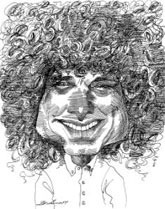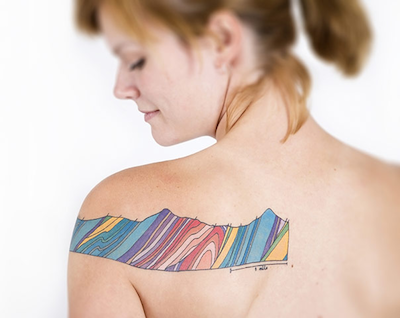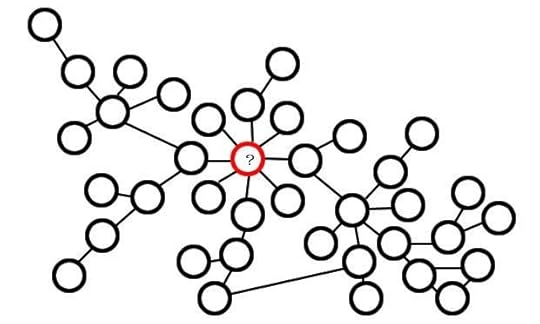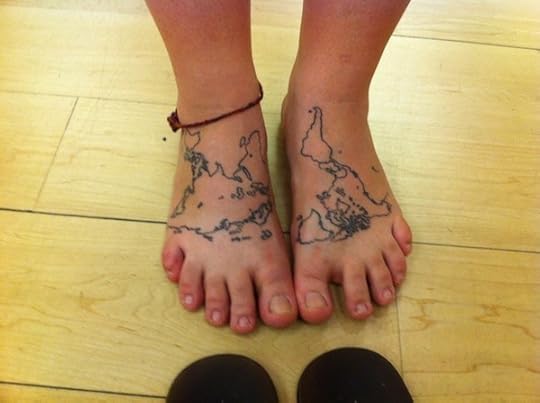Carl Zimmer's Blog, page 54
December 1, 2011
Making viruses the natural way
 When it comes to viruses, we humans like to pretend we know much more than we really do. It's understandable. The influenza virus, for example, has only ten genes. It is just a shell that delivers genes and proteins into a host cell, where it hacks the biochemistry to manufacture more viruses. It seems like such an easy biological problem to solve.
When it comes to viruses, we humans like to pretend we know much more than we really do. It's understandable. The influenza virus, for example, has only ten genes. It is just a shell that delivers genes and proteins into a host cell, where it hacks the biochemistry to manufacture more viruses. It seems like such an easy biological problem to solve.
Yet the flu and other viruses hide a complexity which virologists have only partly uncovered. The idea that someone could intentionally design a super-lethal virus from scatch–as plausible as it may seem–is, for now, a delusion.
If you've been following the news this past week, you may think I've just been proven wrong. Reports have surfaced about two teams of scientists producing flu viruses that could potentially kill millions if they escaped from the labs. The scientists have the viruses locked up tight for now, and government officials are debating whether they can publish their results. (New Scientist and Science have excellent reports.)
So is this evidence that scientists have become viral Frankensteins, who can engineer pathogens at will? Hardly.
The new research is part of a long-running struggle to understand how new ...
November 30, 2011
Science writing workshop for graduate students: Registration is open
In January, I'll be conducting the 2012 edition of my science writing workshop for graduate students. The workshop is hosted by the Yale Ecology and Evolutionary Biology Department. It's a short introduction to the craft of bringing science to the world, tailored for science graduate students. People who attend are typically interested in making science writing part of their work as scientists, or are even thinking about making it their career. Students from other institutions can contact the EEB department to get permission to register.
The syllabus and information about registering are on the workshop web site.

November 28, 2011
Peace, war, and evolution: My profile of Steven Pinker in tomorrow's New York Times
 The New York Times has launched a series called Profiles in Science. When I was invited to join the undertaking, I proposed writing about the Harvard psychologist Steven Pinker. I had run into Pinker at the World Science Festival in June, and he had told me about his next book, The Better Angels of Our Nature, which was due out in the fall. In the 800+ page tome, Pinker argues that rates of human violence have been crashing for millennia, and he offers psychological explanations for the fall.
The New York Times has launched a series called Profiles in Science. When I was invited to join the undertaking, I proposed writing about the Harvard psychologist Steven Pinker. I had run into Pinker at the World Science Festival in June, and he had told me about his next book, The Better Angels of Our Nature, which was due out in the fall. In the 800+ page tome, Pinker argues that rates of human violence have been crashing for millennia, and he offers psychological explanations for the fall.
I've followed Pinker's work since I first came across his 1994 book, The Language Instinct. In the wake of the book's success, he quickly became a leading exponent of evolutionary psychology, coming out swinging against its critics such as Stephen Jay Gould. When Pinker described his book to me, I was intrigued. I wondered how someone who argued that human nature was shaped long ago by natural selection would end up arguing that human nature–or at least human experience–is now changing rapidly for the better. But there were other things I was wondering–how, for example, does a writer of massive books about human nature live inside the ...

The Observer gets inked (+ more #scienceink news)
 1. Science Ink excerpt: The Observer (The Guardian's sister Sunday magazine) has put together a lovely excerpt from Science Ink. Along with a selection of images, they've adapted part of the introductory essay I wrote for the book. Here's a snippet:
1. Science Ink excerpt: The Observer (The Guardian's sister Sunday magazine) has put together a lovely excerpt from Science Ink. Along with a selection of images, they've adapted part of the introductory essay I wrote for the book. Here's a snippet:
…Some people have watched this growing obsession of mine and scoffed. They see tattoos as nothing but mistakes of youth, fated to sag, or to be scorched off with a laser beam.
But tattoos are etched deep in our species. In 1991, two hikers climbing the Austrian Alps discovered the freeze-dried body of a 5,300-year-old hunter, who came to be known as Ötzi. His skin was exquisitely preserved, including a series of hatch-marks on his back and a cross pattern on his knee. A team of Austrian researchers determined that the tattoos had been made with ashes from a fireplace, which someone had sprinkled into small incisions in Ötzi's skin.
Tattoos are preserved on other mummies from ancient civilisations, from the Scythians of central Asia to the Chiribaya of Peru. If, through some miracle of preservation, archaeologists find older human skin, I ...

November 22, 2011
Are we the teachable species?
 We know that our species is unique, but it can be surprisingly hard to pinpoint what exactly makes us so. The fact that we have DNA is not much of a mark of distinction. Several million other species have it too. Hair sets us apart from plants and mushrooms and reptiles, yes, but several thousand other mammals are hairy, too. Walking upright is certainly unusual, but it doesn't sever us from the animal kingdom. Birds can walk on two legs, after all, and their dinosaur ancestors were walking bipedally 200 million years ago. Our own bipedalism–like much of the rest of our biology–has deep roots. Chimpanzees, whose ancestors diverged from our own some seven million years ago, can walk upright, at least for short distances.
We know that our species is unique, but it can be surprisingly hard to pinpoint what exactly makes us so. The fact that we have DNA is not much of a mark of distinction. Several million other species have it too. Hair sets us apart from plants and mushrooms and reptiles, yes, but several thousand other mammals are hairy, too. Walking upright is certainly unusual, but it doesn't sever us from the animal kingdom. Birds can walk on two legs, after all, and their dinosaur ancestors were walking bipedally 200 million years ago. Our own bipedalism–like much of the rest of our biology–has deep roots. Chimpanzees, whose ancestors diverged from our own some seven million years ago, can walk upright, at least for short distances.
If looking for human uniqueness on the outside is difficult, is looking on the inside–in particular, at our mental lives–any simpler? There's no doubt that we can do things that even our great ape relatives cannot. For one thing, we can represent the world symbolically in our heads, and we can use words to communicate that symbolic thought to one another. Yet we can sometimes find ...

November 21, 2011
The Bipedal Atlas #scienceink
I'm a student at MIT in the Earth, Atmospheric & Planetary Science Department hoping to solve the glacially-coupled climate problem of global warming by developing efficient carbon sequestration technology. In honor of our beautiful mother Earth, and as a constant reminder of the places I can go under my own human power, I had the world map, minus Antarctica, tattooed on the tops of my feet in a Mercator projection.
It is deeply personal to me–I am Hungarian, with the European continent on one foot–but grew up in the US–so the Western half is on the other side. I have a minimal carbon footprint on our mother Earth, cycling as much as possible for transportation and even hoping to circum-paddle Antarctica some day.
Click here to order a copy of Science Ink: Tattoos of the Science Obsessed.
November 16, 2011
Scaling the Barrier: My new column on the brain

Our brains are protected by an invisible fortress wall, keeping it safe from many dangers. Unfortunately, it also keeps out a lot of the drugs that could help cure diseases of the brain. In this month's column for Discover, I look at some of the newest strategies for scaling the wall. Check it out.
Image: Ken Lund, Flickr, via Creative Commons

November 15, 2011
A new episode of Radiolab: Patient Zero
 Radiolab has a new episode available for your auditory pleasure. The theme of this episode is "Patient Zero." Hosts Jad Abumrad and Robert Krulwich trace diseases and ideas back to their places of origin. I help tell the story of the origin of HIV along with David Quammen (who's got a book coming out soon on animal diseases) and some of the pioneering scientists who have figured out how viruses spill over from animals to us. Check it out!
Radiolab has a new episode available for your auditory pleasure. The theme of this episode is "Patient Zero." Hosts Jad Abumrad and Robert Krulwich trace diseases and ideas back to their places of origin. I help tell the story of the origin of HIV along with David Quammen (who's got a book coming out soon on animal diseases) and some of the pioneering scientists who have figured out how viruses spill over from animals to us. Check it out!

November 14, 2011
Neanderthal Neuroscience

November 7, 2011
#scienceink update: The New York Times does a slide show, and New Scientist approves





















